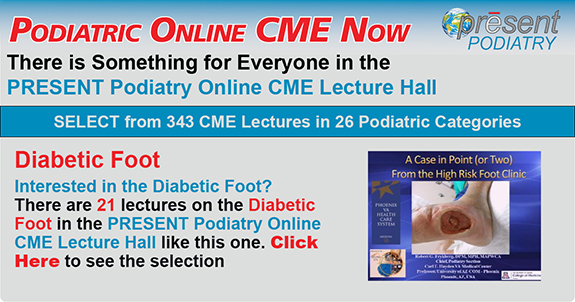
Practice Perfect 700
Orthopedics Versus Podiatry MAVs
Orthopedics Versus Podiatry MAVs

This edition of Practice Perfect is our 700th. I’ve been writing this blog since I was a senior resident in 2006, and after 14 years of weekly issues I’m often surprised that the PRESENT e-Learning folks – much less the rest of our community - still want to hear from me! (Note from PRESENT – We love you, Dr Shapiro!)
As many of us are already aware, one of the more controversial topics in podiatric residency training is how many surgical cases one needs to graduate, termed “minimum activity volume” or MAV. There are many nuances and questions to this topic, such as the definition of “minimum” and how we define competency to graduate from residency.
As a point of reference, these are the current MAVs for podiatric residents in training today from the CPME 320 document that guides podiatric residencies.
| Total surgeries (1st and 2nd assist) | 400 | |||
| Total podiatric surgical cases | 300 | |||
| Trauma cases (don’t have to be surgical) | 50 | |||
| Digital | 80 | |||
| First ray | 60 | |||
| Other soft tissue foot | 45 | |||
| Other osseous foot | 40 | |||
| Reconstructive rearfoot and ankle | 50 |
Since volumes are arguably important for surgeons, let’s take a look at the volume requirements for our orthopedic colleagues when they are in residency training. The numbers in the table below are from the ACGME’s (accrediting body for MD and DO residencies) orthopedics requirements. I’ll note that they recommend a minimum of 1,000 cases, comparable to our 400. Given that orthopedists are responsible for the entire body and not a region, like podiatrists, I would have assumed the overall minimum numbers would be greater.
| Category | Minimum | ||
| Knee Arthroscopy | 30 | ||
| Shoulder Arthroscopy | 20 | ||
| ACL Reconstruction | 10 | ||
| THA | 30 | ||
| TKA | 30 | ||
| Hip fractures | 30 | ||
| Carpal tunnel release | 10 | ||
| Spine decompression/posterior spine fusion | 15 | ||
| Ankle fracture fixation | 15 | ||
| Closed reduction forearm/wrist | 20 | ||
| Ankle and hind and mid-foot arthro | 5 | ||
| Supracondylar humerus perc | 5 | ||
| Operative treatment of femoral and tibial shaft fractures | 25 | ||
| All pediatric procedures | 200 | ||
| All oncology procedures | 10 |
Focus your attention on the cases that overlap podiatry. They require only 15 ankle fracture fixation cases and only five ankle, rearfoot, or midfoot cases. That’s only 20 cases that include the foot or the ankle. These minimums say nothing about soft tissue procedures or surgery of the forefoot.
My first thought while examining these numbers is, we’re comparing podiatry residents to ortho residents, but maybe we should compare our residency numbers to foot and ankle orthopedic fellows. Unfortunately, I was unable to find any regulations for ortho fellows on the Internet or via the ACGME’s publications. My second thought is, is this actually a fair comparison, because any orthopedic surgeon can do foot and ankle surgery, and they, in fact, often do. I also don’t know the stats on what portion of foot and ankle surgery done by orthopedic surgeons is done by those having done foot and ankle fellowships, as opposed to those who haven’t. Considering that orthopedists do more ankle fracture ORIF procedures than podiatrists, I think it’s a fair comparison. It then seems strange that their minimum number of ankle fractures is only 15. Is it acceptable that orthopedic residents only require five ankle, rearfoot, or midfoot procedures?
Based on these numbers, I would only allow podiatrists and fellowship trained orthopedic foot and ankle surgeons to do procedures on this region of the body. The question in all of this is how many of cases during training are actually necessary for a trainee to achieve competence? No one actually knows the answer, so some advocate for completing as many cases as possible. Unfortunately, no one has published research to guide residency educators on how many cases are needed before a surgeon is competent to perform a particular procedure. I don’t disagree entirely with using volumes – obviously experience is important – but it’s really the quality of the surgical education that matters. Logging 200 poorly done Lapidus procedures will not create competence. On the other hand, 200 Lapidus procedures in which each case was examined for what worked and what didn’t and creating learning points to apply to successive procedures has the chance to create a truly competent residency graduate.
See more Biomechanics Lectures Here
Visit the Lecture Hall at Podiatry.com
In these days, where we are all eagerly awaiting the upcoming revisions to the CPME guidelines on residencies it’s my hope that our new residency guidelines lean more toward true competencies and less on numbers.
































Comments
There are 0 comments for this article